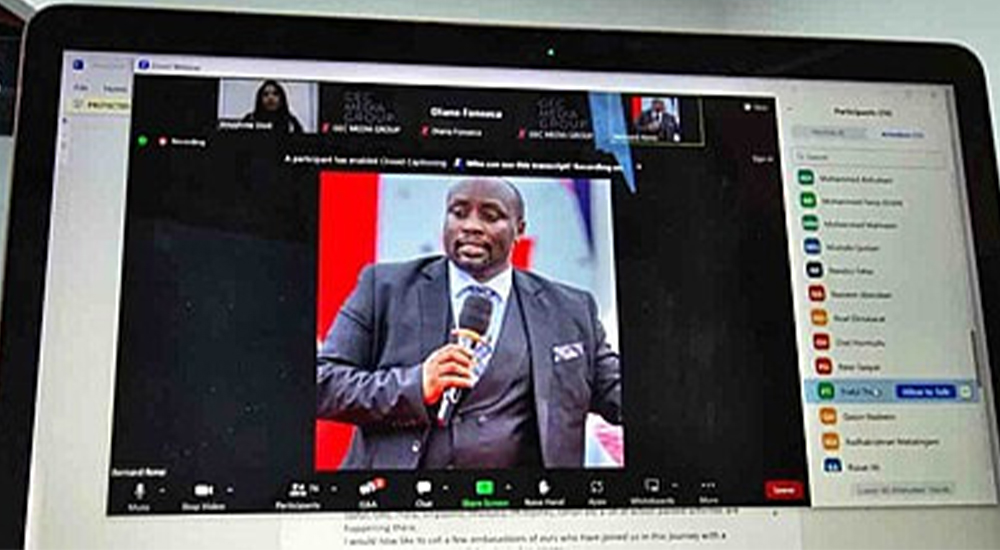A decade ago, Marc Andreessen proclaimed that software was eating the world. This came at a time when social media start-ups were just metamorphosing into giants, and cloud computing was still very much emerging technology. The software revolution introduced a wave of innovation and approaches that have fuelled transformation across industries.
A few years later, this statement changed: Open source software was eating the world, with Deutsche Bank noting in 2015 that there were open source rivals for almost every major infrastructure and data management software market. Red Hat has always believed in open source innovation; it is what makes us Red Hat.
From there, as the saying goes, things escalated quickly. Digital transformation started to take hold, apps were king, and every company became a software company. Retailers like Walmart and equipment manufacturers like John Deere opened innovation labs emphasising application development, frequently iterating on open source software that was then contributed back to communities and driving open source as the currency of a digital age.
But now, 2020 and the global pandemic have made it clear that we cannot just build applications – we need to be in charge of running them too. Covid-19 forced organisations to accelerate their digital transformation efforts to drive innovation and meet customer demands.
In short, it is not enough to view every company as a software company. Now, every CIO is a cloud operator. This does not mean every enterprise organisation is the next hyperscaler. But think about the combination of hardware, applications, virtual environments, existing cloud services and associated infrastructure overseen by the average CIO.
It may not be on the same scale as what we think of as cloud but that does not make it any less of one. Our datacentres are on track to be composed of potentially hundreds of unique clouds, and every organisation will need to have the platforms, tools, processes, and people to effectively operate across these diverse landscapes.
Every CIO and their respective organisations must understand that they control their own cloud destiny. We know how to build for the cloud, but now we need to know how to run the cloud at scale.
Going all in on cloud services might seem easy, but as an all-in strategy, it is a future bet few CIOs are making to give themselves ultimate flexibility for a fast changing world. Maintaining a large datacentre that is not only spread across multiple locations but now also multiple clouds requires a highly-skilled IT workforce and can incur significant costs. Taking a hybrid approach offers balance, both technologically and economically, but without a consistent hybrid cloud foundation, there are extensive complexities in blending on-premises and cloud services along with the risk of incompatible stacks.
For CIOs that maintain traditional datacentres, the notion of the datacentre is also expanding horizontally. While it is no longer unusual to scale workloads and environments to the public cloud, the demands of modern applications and end users are not fully answered by centralised processing and analytics. The rise of edge computing comes hand in hand with 5G in telecommunications, artificial intelligence, augmented reality, vehicles as datacentres and more, driving compute resources to the furthest edges of enterprise networks.
The two key delineating factors seen in edge computing are it simply does not exist without the hybrid cloud and the foundation of edge computing must be open or it will fail.

Cloud environments, datacentres and edge devices are all incredibly different footprints, each with unique needs around management, security networking and more. Cloud operators need a common foundation to span these diverse environments, just as they did to connect different cloud deployments, virtualised environments, and hardware stacks. That common foundation was, is and will always be Linux and Linux containers.
For cloud operators, Linux provides the linkage between each footprint of the open hybrid cloud, including edge. Being able to move workloads from the edge to the datacentre to the public cloud without having to completely change each application is vital and made possible only through the open standards of the Linux kernel. Linux underpins the hybrid cloud, and it is also the foundation of the furthest edge of enterprise IT.
Being a cloud operator, however, is about more than adopting and integrating new core technologies. It is about understanding what is needed above and beyond these technologies to further expand your cloud operations at scale, as well as gaining the skills internally to fully build, manage, maintain, and secure these expanded environments.
Successfully deploying the underlying platforms for an open hybrid cloud strategy is one thing, but it brings more challenges: security, compliance, networking, and management. A cloud is not a static deployment; it will change, and it needs to change to adapt to dynamic business needs and market demands. Understanding what your specific deployment requires now and in future is a key to success for CIOs as cloud operators.
Finally, cloud operators need the skills internally to run their clouds, whatever definition of the term they choose to apply. Traditional IT skill sets will always be in demand, but it is equally as important to nurture teams to learn and master new technology platforms as they build up an internal catalogue of tools and best practices that are vital to future success. A cloud operator building for sustainable success cannot outsource everything – some things you need to learn to do yourself.
The new datacentre is the hybrid cloud, composed of bare-metal servers, virtualised environments, edge devices and potentially hundreds or more cloud services. CIOs are the newly minted operators of these complex, vast cloud footprints, and they need the platforms, tools, processes, and people to operate across these clouds.
Just as Red Hat was ready to help every company become a software company, we are here to help CIOs adapt to the new world of cloud operations. The future is hybrid, and so are we.
Key Takeaways
- Every CIO and their respective organisations must understand that they control their own cloud destiny.
- For cloud operators, Linux provides the linkage between each footprint of the open hybrid cloud, including edge.
- Understanding what your specific deployment requires now and in future is a key to success for CIOs as cloud operators.
- Cloud operators need the skills internally to run their clouds.
CIOs are the newly minted operators of the vast cloud footprint, and they need the tools, processes, people to operate, writes Paul Cormier of Red Hat




